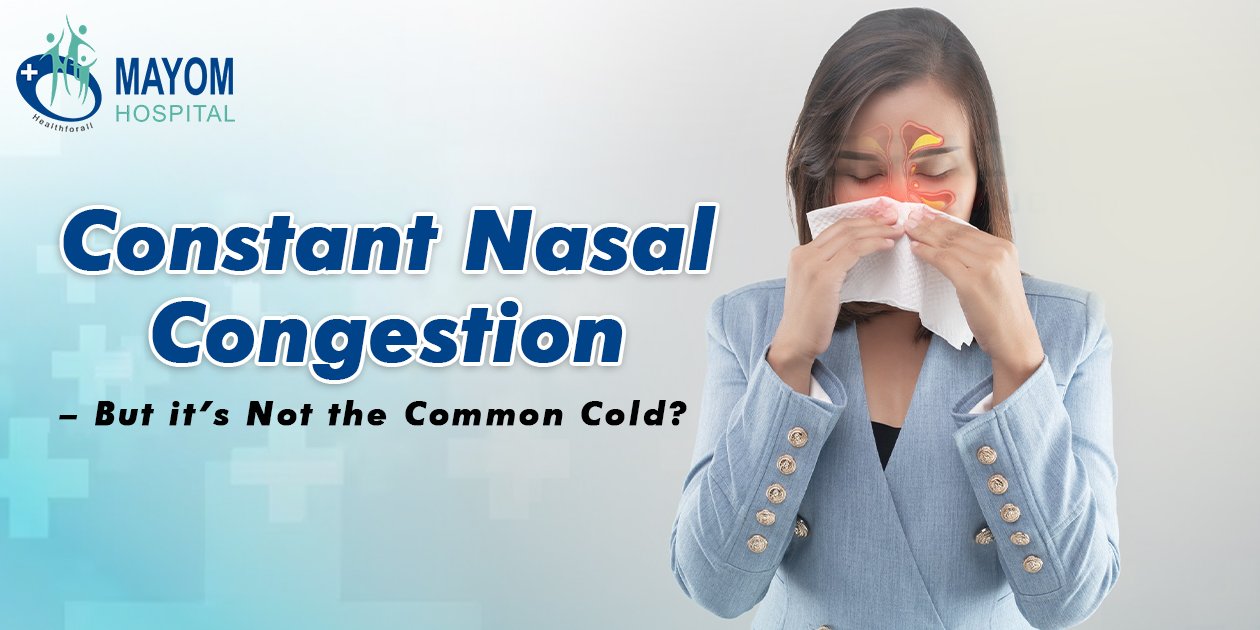Nasal valve collapse (NVC) refers to the narrowing or collapse of the nasal valves, which are important structures responsible for maintaining patency and airflow within the nasal passages.
Exploring the causes, symptoms, and treatment options for nasal valve collapse, with Mayom Hospital, one of the renowned hospital in Gurgaon with best ENT doctors.
Anatomy and Function of Nasal Valves:The nasal valves are located within the nasal passages and serve as a narrowing that regulates airflow. They consist of two main regions:
- The External Nasal Valve (ENV): The ENV is formed by the nasal alar cartilage.
- The Internal Nasal Valve (INV): INV is created by the nasal septum, the upper lateral cartilages, and the nasal floor.
Causes of Nasal Valve Collapse:
- Structural Causes:
a. Congenital factors: Genetic predisposition or developmental abnormalities.
b. Trauma: Nasal fractures or previous nasal surgeries.
c. Aging: Weakening of nasal cartilages and tissues over time.
- Functional Causes:
a. Dynamic collapse: Weakening or dysfunction of the nasal muscles responsible for maintaining valve patency.
b. Nasal congestion: Conditions such as allergies, chronic rhinitis, or sinusitis that lead to nasal swelling.
Symptoms of Nasal Valve Collapse:
- Nasal obstruction: Difficulty breathing through the nose.
- Noisy breathing: Audible whistling or snoring sounds during inhalation.
- Nasal congestion: Feeling of nasal stuffiness.
- Reduced sense of smell.
- Headaches and fatigue due to poor sleep quality.
Diagnosis of Nasal Valve Collapse:
- Clinical evaluation: A thorough examination of the nasal passages by an otolaryngologist.
- Nasal endoscopy: Visualization of the nasal structures using a small camera.
- Rhinomanometry: Objective measurement of nasal airflow and resistance.
- Imaging studies: CT scans or nasal radiographs to assess structural abnormalities.
Treatment Options:
-
- Non-surgical treatments:
-
- Nasal dilators: External devices placed over the nose to improve airflow.
- Topical nasal steroids: Reduce inflammation and swelling.
- Decongestants: Temporary relief of nasal congestion.
- Allergy management: Identification and avoidance of triggers.
-
- Surgical treatments:
- External nasal valve surgery: Techniques to strengthen the nasal sidewalls and stabilize the ENV.
- Internal nasal valve surgery: Procedures to address INV collapses, such as septoplasty, rhinoplasty, or spreader grafts.
- Functional rhinoplasty: Comprehensive surgical interventions to improve nasal airflow and aesthetics.
Post-treatment Management:
- Recovery and healing: Follow-up care after surgery, including pain management and wound care.
- Rehabilitation: Nasal exercises and breathing techniques to optimize the benefits of treatment.
- Long-term outcomes: Successful treatment can significantly improve nasal breathing and quality of life for most patients.
In conclusion, nasal valve collapse can significantly impact a person's quality of life, causing breathing difficulties and other associated symptoms. Prompt diagnosis and appropriate treatment are essential to alleviate these symptoms and improve nasal airflow. Mayom Hospital, recognized as one of the best hospitals in Gurgaon, offers specialized ENT services and houses the best ENT doctors in Gurgaon who are experienced in managing nasal valve collapse. By providing advanced diagnostic tools and a range of treatment options, Mayom Hospital strives to ensure optimal patient outcomes and satisfaction in their journey towards better nasal health.









Comment Here